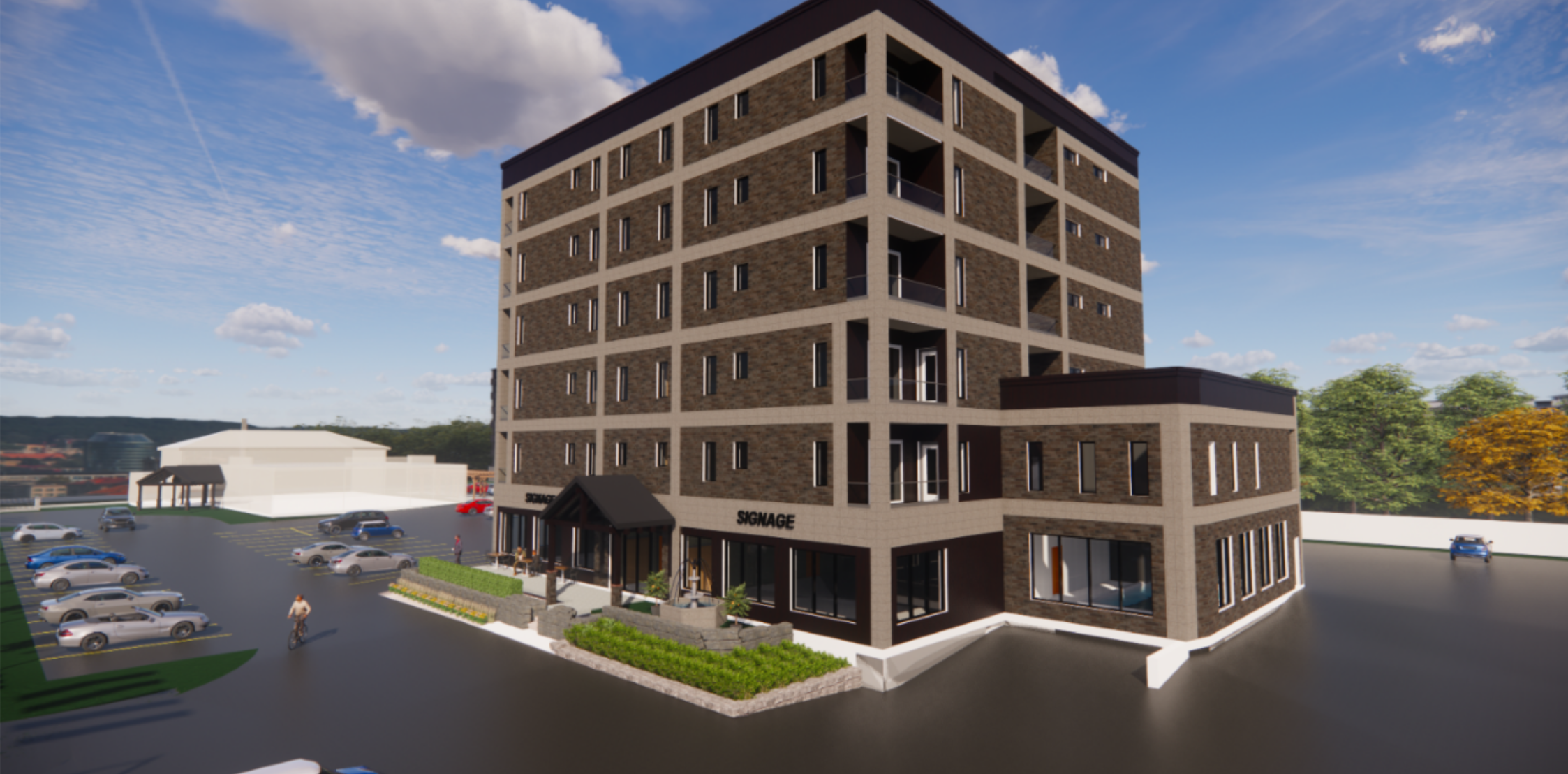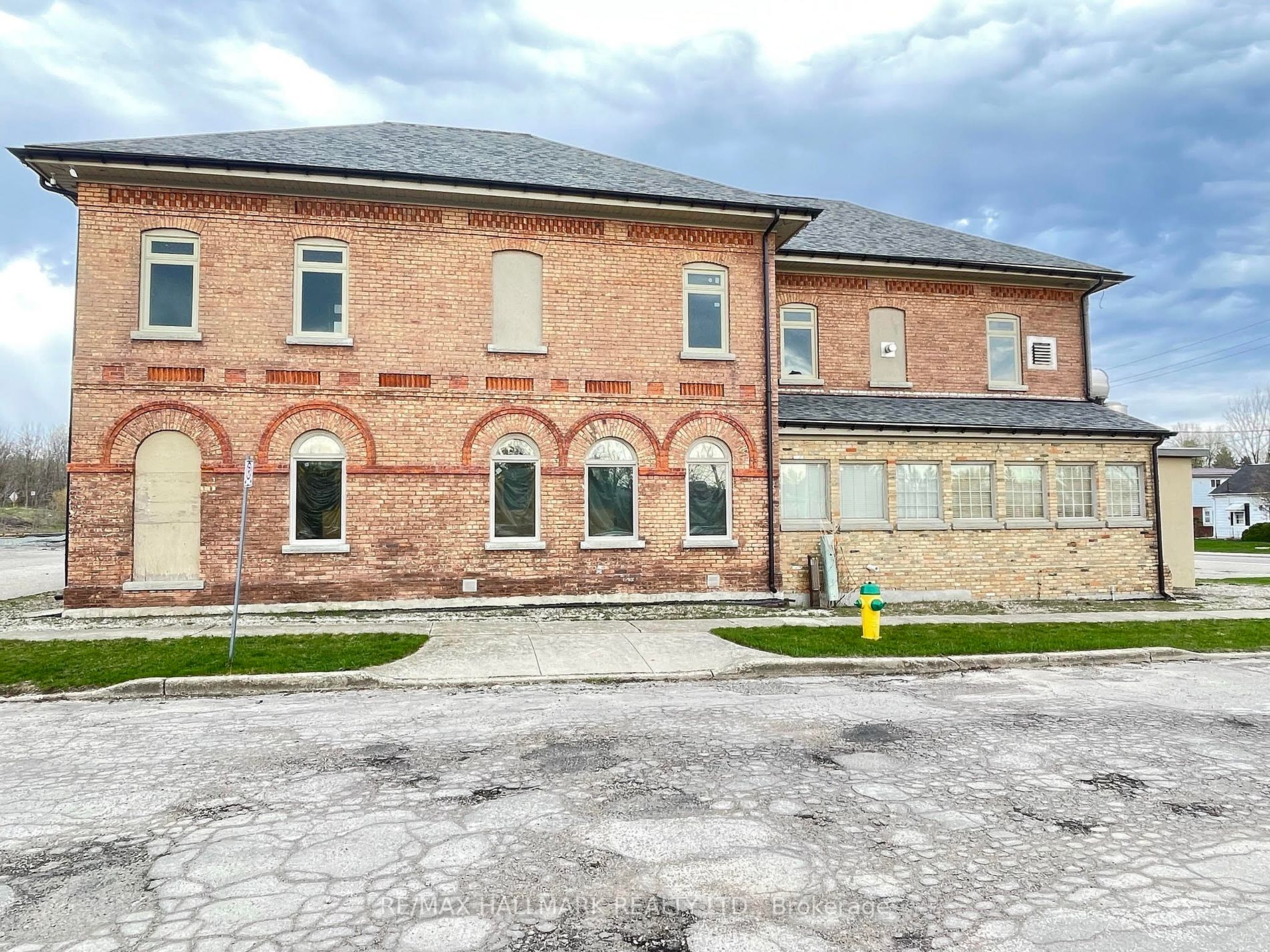Author The Lilly Commercial Team

Office Owners Face Loan Maturity Challenges
A sizable share of office stock in some markets will be subject to maturities over the next three years, according to the latest CommercialEdge report.
The office sector faces challenges as interest rates rise, the economy slows and demand for office space declines. Office owners with loans maturing in the next three years—totaling more than 9,500 buildings and 17 percent of office stock—face an uphill battle. Eight of the top 25 markets surveyed by CommercialEdge will see at least 20 percent of their stock subject to maturing loans in the coming three years, with Atlanta leading the way at 29.1 percent. Recent high-profile defaults by Columbia Property Trust or Brookfield Asset Management may indicate that more pain is on the way for office owners.
National average full-service equivalent listing rates averaged $38.28 per square foot at the end of February, down 160 basis points year-over-year. Average listing rates haven’t decreased significantly despite the quality of space listed and the role of concessions in attracting tenants. Landlords may be cautious about lowering listing rates due to concerns about the impact on property valuations. Meanwhile, the national office vacancy rate continued its upward trajectory, clocking in at 16.5 percent in February, up 70 basis points from the same period last year.
The growth of office-using sectors slowed down in February, with only 19,000 jobs added, a 2.4 percent increase year-over-year. The deceleration is attributed to tech layoffs, with companies such as Google, Microsoft, Salesforce and Amazon reducing their workforce. This will have the most significant impact on San Francisco, the Bay Area and Seattle, but other markets like Austin, Manhattan and Northern Virginia will also feel the effects.
Life sciences drive pipeline growth
Nationwide, the under-construction pipeline had 123.5 million square feet of new office space under construction, or 1.9 percent of total stock, according to the CommercialEdge office report. An additional 271 million square feet was in the planning stages, but some of these projects may be delayed or canceled due to remote and hybrid work becoming more prevalent.
However, the life science sector is thriving, particularly in Boston, the Bay Area and San Diego. As of February, Boston had more than 13.5 million square feet of office space underway, accounting for 5.6 percent of total stock; San Diego followed with 4.6 million square feet underway, or 5.0 percent of stock, then the Bay Area with 5.9 million under construction, representing 3.0 percent of stock. Meanwhile, office investment in the first two months of 2023 totaled $4.6 billion.
Source Real Estate News EXchange. Click here to read a full story
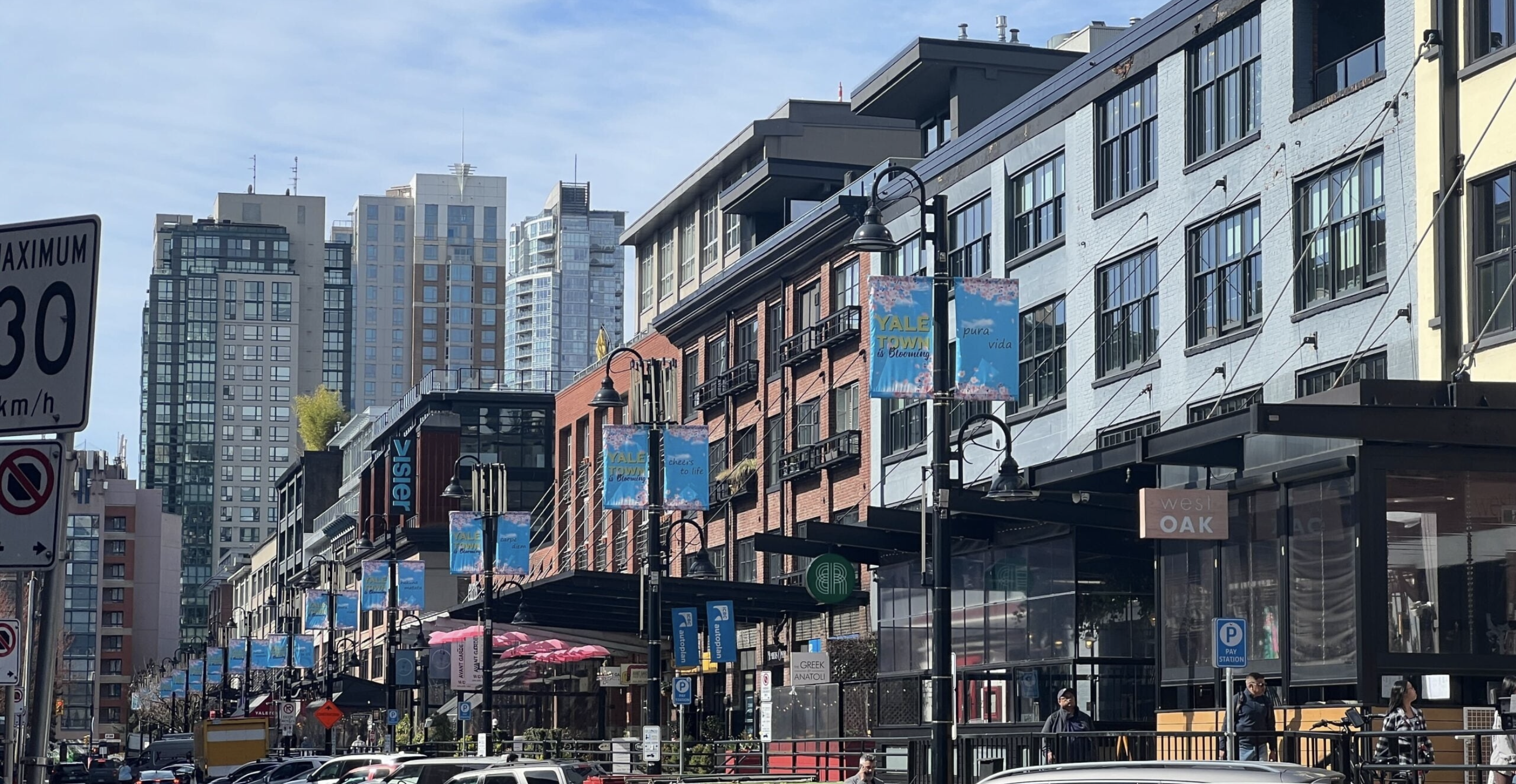
Canadian Retail Sales Growth For 2023 Expected To Be ‘Modest’ Following Record-Breaking Numbers Two Years Prior
After a difficult 2020, Canadian retail sales broke a new record in 2021 and did so again in 2022.
The question is, “will 2023 follow suit?” With consumer confidence declining and the gap between household debt and savings widening, retailers face a few hurdles, says a new report by Colliers Real Estate Management Services.
The ‘Seeing the forest for the trees: modest retail growth in 2023’ tenant survey report.

The report has four key takeaways:
- Tenants’ desire to increase retail space suggests already low vacancy rates will decline by one per cent nationally over the next 18 months;
- Retailers indicate that 2022 was slightly profitable for their business, with the majority expecting a modest increase in profitability in 2023 due to declining inflation;
- Five lessons from profitable retailers:
(i) have physical stores,
(ii) build an e-commerce platform,
(iii) connect the physical store with the e-commerce platform,
(iv) incentivize in-store pick-up, and
(v) share the cost of returns with customers;
4. While retailers are predicting modest growth, abnormal patterns of consumer spending caused by the pandemic make it more difficult to predict exact levels of growth.
Jane Domenico, SVP & National Lead, Retail Services Real Estate Management Services for Colliers, said the expectation is that sales growth will be moderate this year in Canada.
“One of the reasons is the consumer is going to start acting a bit more like a normalized consumer pre-COVID. That’s one of the things that really surprised us in 2022. With inflation going up and the savings rate going at the same time, and negative consumer confidence, we weren’t expecting as strong at the end of the year for 2022,” said Domenico.
“We think sales will be at or better than 2023 but not the huge year-over-year growth that we saw the last two years and that’s both e-commerce and bricks and mortar sales.”

Here are some of the key trends identified by the Colliers report and commentary on those trends:
Tenants’ desire to increase retail space suggests already low vacancy rates will decline by one per cent nationally over the next 18 months.
“Tenants were asked whether the pandemic changed the importance of physical retail space for their business. While the majority (57 per cent) of survey respondents indicate a desire to keep the same amount of space, the difference between those looking to increase (15 per cent) and decrease (nine per cent) – and the square footage – suggests that the vacancy rate will decline by one per cent nationally. This is consistent with our Q4 2021 report. New entrants to the Canadian market will support a further reduction in vacancy, likely placing upward pressure on retail rents in certain markets,” said Colliers.
Retailers indicate that 2022 was slightly profitable for their business, with the majority expecting a modest increase in profitability in 2023 due to declining inflation.
“When asked to rank their profitability on a scale from one to five (one being extremely unprofitable and five being extremely profitable), retailers averaged a 3.1. This is likely the result of inflation increasing business expenses, while reducing consumers’ discretionary income. Retailers are more optimistic for 2023, with profit expectations shifting from a weighted average of 3.1 to 3.6, likely due to expectations that inflation will be reduced,” said the report.
Five lessons from profitable retailers
Have physical stores: 87 per cent of retailers find in-store shopping to be the most profitable, followed by Buy Online Pick Up In Store (BOPIS).
Build an e-commerce platform: Retailers with an e-commerce platform were almost twice as likely to be profitable in 2022.
Connect the physical store with the e-commerce platform: Retailers that connected their physical store with their e-commerce platform were 35 per cent more likely to be profitable in 2022.
Incentivize in-store pick up: Retailers indicate some customers spend up to 35 per cent more than their original online purchase when they pick up in-store.
Share the cost of returns with customers: Retailers who shared cost of returns with customers were 40 per cent more likely to be profitable in 2022.
While retailers are predicting modest growth, abnormal patterns of consumer spending caused by the pandemic make it more difficult to predict exact levels of growth.
“The pandemic altered traditional patterns of consumer spending. The pandemic closed the gap between household savings and debt, which supported record high retail sales in 2021 and 2022. As household debt and savings trend towards pre-pandemic levels, this will have an impact on retail sales,” said Colliers.
“Traditionally, consumer confidence is an indicator of what to expect in retail spending. When consumers express confidence in the economy, they are likely to spend more, while pessimism is a sign that savings rates will increase. In 2022, a rare break from tradition saw retail sales actually increase despite declining consumer confidence. This is likely due to pandemic savings permitting greater spending. That said, as pandemic savings decrease, we are likely to see a return to the historic correlation between consumer confidence and retail spending.”
The Colliers report said Canadian retail sales in 2022 were the highest on record, totaling over $735 billion. This level of spending was fueled, in part, by pent up demand and higher than normal saving rates during the pandemic. That said, high inflation limited retailer purchasing power and diminished profits, said the report.
E-commerce as a percentage of total Canadian retail sales sits at approximately six per cent and is forecasted to grow to approximately eight per cent by 2025, said Colliers.
“For several years, the growth in e-commerce was expected, by some, to come at the expense of brick and mortar. As we reported in January 2022, e-commerce and brick and mortar are “friends, not foes,” and unification is necessary to drive overall growth. Brick and mortar sales were $693B in 2022, representing a nine per cent increase over 2021. This is consistent with the growth we’ve witnessed over the past eight years, the only exception being 2020, due to the severity and length of lockdowns nationwide,” explained the report.
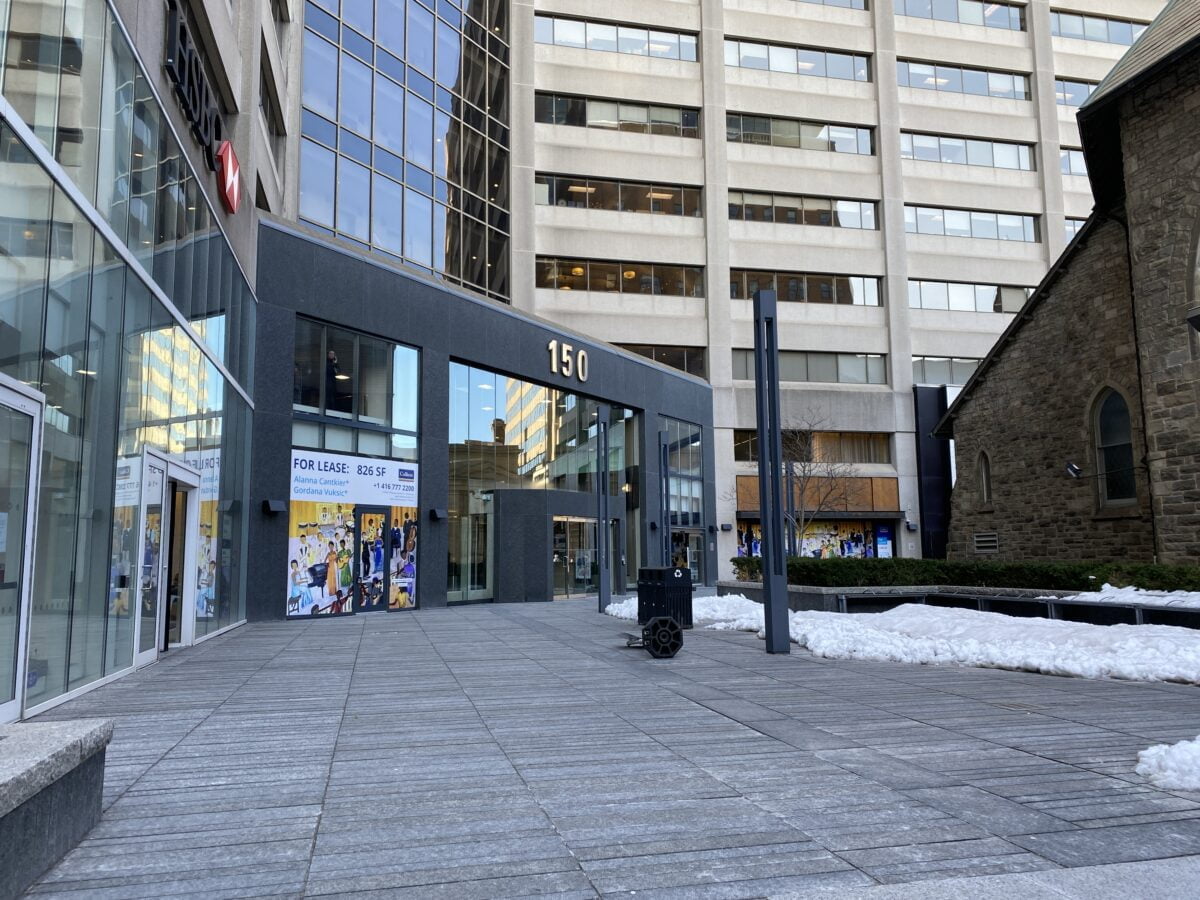
“Consumers are predicted to return to pre-pandemic spending patterns this year, with sectors that facilitate experiences, such as full-service restaurants and apparel, primed for growth.
“While the pandemic changed typical spending behaviour, sales demonstrate we are returning to pre-pandemic spending patterns. Retail sectors that performed poorly during much of the pandemic, including full-service restaurants and apparel, are primed for growth in 2023. Other sectors, such as convenience stores and used cars, are expected to see the highest decline in sales.”
Some other key findings from the report:
- 55 per cent of retailers report having an e-commerce platform, with no notable fluctuation over the past year and a half;
- The pandemic increased the adoption of e-commerce platforms. At the beginning of 2020, 27 per cent of retailers cited having an e- commerce platform, whereas that number is 55 per cent today, with another nine currently developing one;
- Retailers who have an e-commerce platform were almost twice as likely to be profitable in 2022, and those with omnichannel capabilities were 35 per cent more likely to be profitable;
- Retailers who have an e-commerce platform indicate that on average, online sales encompass 18 per cent of their total sales and they expect it to grow to 25 per cent by 2025;
- 54 per cent of retailers face persistent supply chain issues;
- Almost half of retailers’ report using their physical units for more than just in-store shopping;
- 87 per cent rank in-store shopping as the most profitable mode of fulfillment, followed by Buy Online Pick Up In Store (BOPIS), and delivery to customers’ homes being the least profitable.
Source Retail Insider. Click here to read a full story
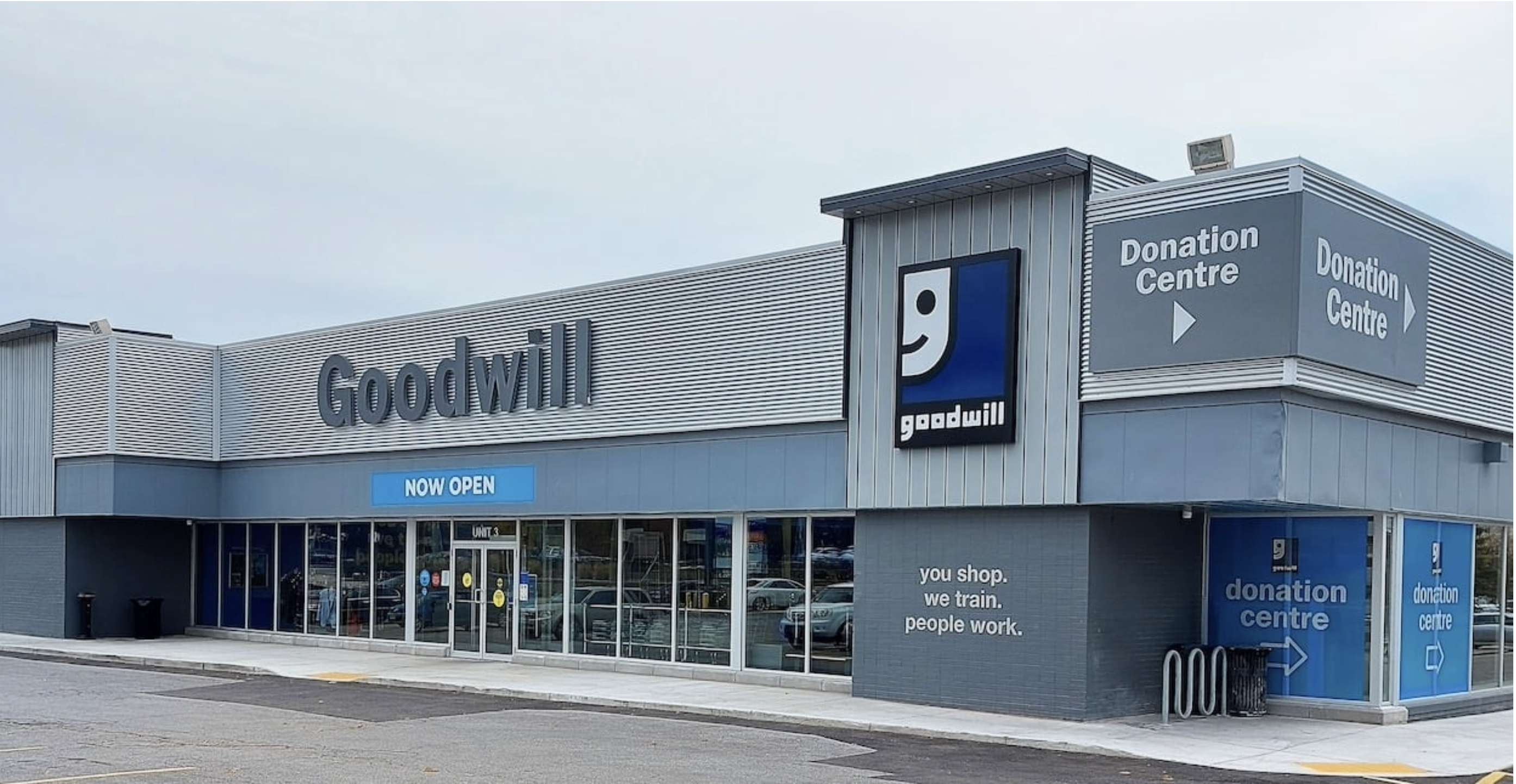
Goodwill Planning To Open Dozens Of Stores In Canada As Thrifting Grows
Goodwill, the number one global brand in resale, is looking to expand in Canada by opening more than 40 stores within the next five years due to the increased popularity of thrift shopping.
“In the last decade I have seen a change and particularly since Covid as there has been more ethical shopping and people wanting to shop with conscience and because thrift enables reuse, recycle, and repurposing – they are obviously more ethical than fast fashion which is one of the world’s biggest polluters. We can reduce new and increase reuse and everybody knows it is better,” says Kelly Duffin, the President and CEO of Goodwill, The Amity Group.
Rise in Resale
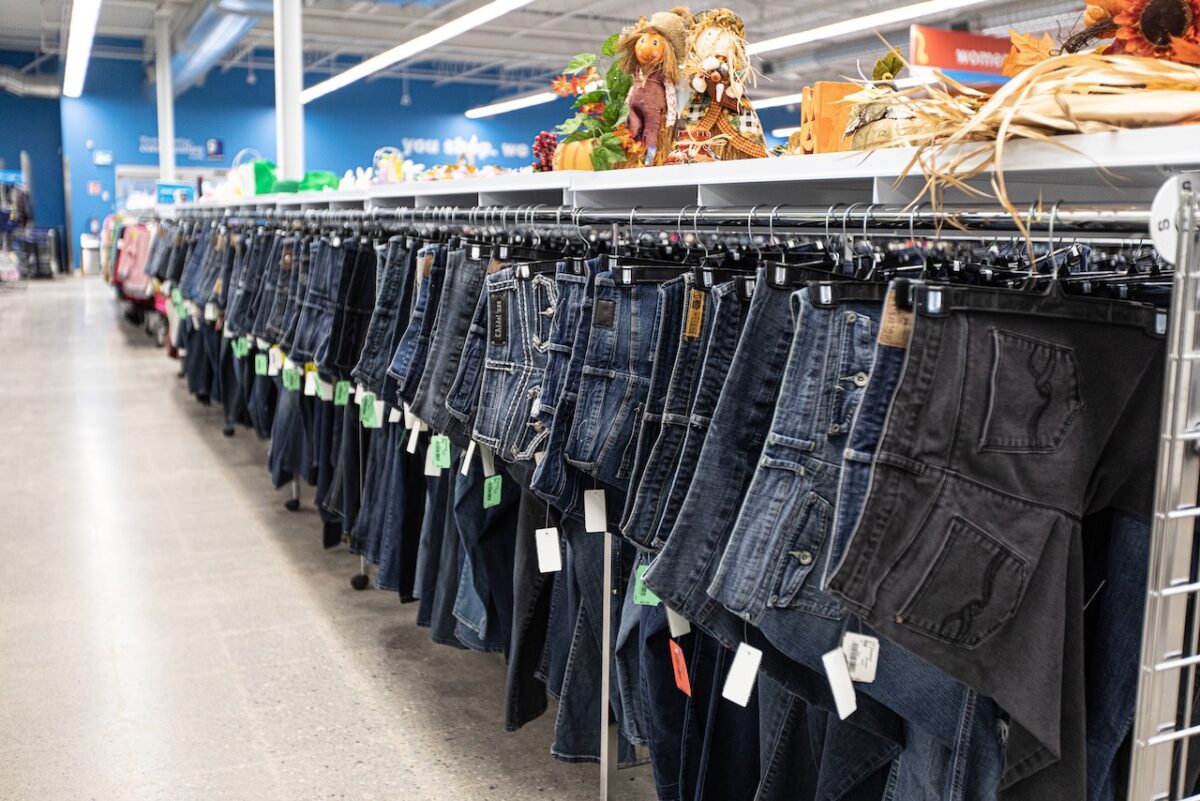
Duffin said resale is one of the fastest growing segments in fashion and today it is mostly fuelled by young adults between the ages of 18 to 35 who are looking to buy fashion at a lower price, want to shop ethically, and who also enjoy looking for unique and personalized looks that you can’t find anywhere else.
Customers can find a variety of unique products such as clothing, jewelry, paintings, musical instruments, and vintage items.
“There are also very real vintage things at Goodwill such as vintage lego, old computer games, old computers, typewriters, and other collectables – those would probably be the things that are special to people and unexpected.”
New Locations

Within the next five years, Goodwill is looking to add more than 40 stores in Canada and more than 75 new donation centers. Each storefront is approximately 20,000 square feet and each donation center is around 2,000 square feet. In total, Goodwill is looking to expand its footprint by adding a million square feet of retail and over 300,000 square feet in light industrial and warehouse space.
So far, Goodwill has three confirmed new locations in Ontario including Niagara Falls which will be opening next month, Waterloo which will open in May, and Burlington which will be announced at a later time. Along with these, Goodwill is adding three storefronts and donation centers in Quebec and they will be in Gatineau, Montreal, and Quebec City. Duffin says more will come as there are more locations in negotiation, especially in Quebec, Ontario, and Alberta.
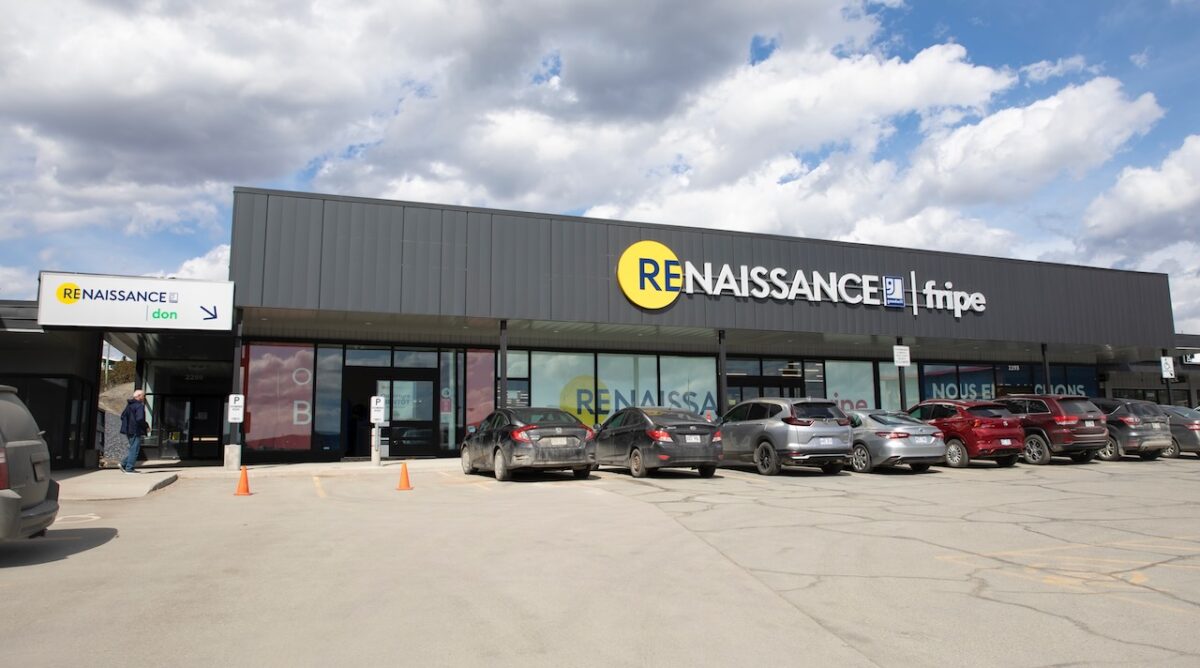
In Quebec, the key areas of growth Goodwill is looking at will include Montreal, Gatineau, Quebec City, Trois Rivieres, Drummondville, Victoriaville, and St. Hyacinthe.
In Ontario Duffin said they are looking at expanding further into London, Cambridge, Hamilton (including Stoney Creek and Waterdown), Burlington, Oakville, Milton, St. Catharines, Fort Erie, Dunnville, Welland, and Thorold.
And lastly in Alberta, it is looking into areas such as Calgary, Edmonton, and Red Deer.
Duffin says with each new location, the retailers surrounding it will also benefit because it will draw in more customers: “We are also a traffic driver as our age demographic is what landlords want to pull into their sites. We can be an anchor and we can also be very complimentary to retail stores including to higher end retailers.”
The Thrill of the Treasure Hunt

“It is the ability to find something unique and it is the thrill of the hunt because you actually don’t know what you are going to find. You can say you want to buy a pair of jeans because we do have that, but what you stumble across on your way is really unique and allows you to represent yourself in fashion that is different from other people as it is really a matter of self expression.”
The treasure hunt has become very popular and people are enjoying the thrill of the hunt and want to spend money in a way that reflects their ethical values, Duffin says. Treasure hunting has been seen a lot on social media channels, even live treasure hunting, where someone walks into a thrift store and shows everyone what items they find and how much the original price was. Treasure hunters usually look for vintage items, designer label clothing, old electronics, and more. In Canada, a woman went treasure hunting with her followers and bought a dress that was only $17 to find out later it could be worth up to $10,000 as it was a Vintage Versace dress.
How to Donate

People can donate items at any store as each has a donation center. You have the option to pull up or walk in and someone will receive your donation. The other way is to go to its standalone donation locations where it is used for only dropping off donations and not for shopping.
All storefronts and donation centers are fully staffed as Duffin says Goodwill is not an organization that has a lot of unattended bin collections as they prefer to personally receive the donations from people and to thank them.
“Goodwill is the number one global brand in resale and we have an extensive history as we were founded in 1902, so we have been around a while and this is the opportunity to get on board with that is only a growing trend. Don’t be held back by misconceptions of your grandmother’s thrift store – get on board with the way shoppers are shopping now.”
Source Retail Insider. Click here to read a full story

Dollarama Profit Jumps Nearly 19% as High Inflation Drives Canadians to Discount Retailer
Inflation-weary Canadians looking for deals are continuing to visit discount stores more often – a trend that helped boost profits at Dollarama Inc.DOL-T -0.41%decrease
DOL-T -0.41%decrease
by 18.8 per cent in the fourth quarter, and drove sales growth exceeding the company’s targets.
The Montreal-based retailer reported on Wednesday that net earnings grew to $261.3-million or 91 cents a share in the 13 weeks ended Jan. 29, compared with $220-million or 74 cents in the same period the prior year. Both sales and earnings growth beat analysts’ expectations.
The company also announced a 28-per-cent hike to its quarterly dividend paid to shareholders, to 7 cents a share.
The growth in Dollarama’s sales has been driven by more frequent transactions at its stores, as people shop more often and the chain draws in new customers. Chief executive officer Neil Rossy told analysts on a conference call that he believes the stores can hold on to some of those gains in market share if customers are satisfied that Dollarama’s products are of a comparable quality to pricier items they might buy elsewhere.
“We really do see just a general trend, an interest in checking the value that we’ve always offered to different groups of people that may not have felt any need to shop at a Dollarama, although that breaks my heart,” Mr. Rossy said.
Over the past year, the retailer has introduced higher price points up to $5 for products on its shelves, both to offset rising costs – such as for shipping and raw materials – and to bring in new items it could not offer at its previous maximum price of $4. Among the products it now sells with a $5 price tag are yoga mats, shoe racks and gardening trellises. Mr. Rossy said on the call that the new price points have been “well accepted” by shoppers.
In a statement on Wednesday, the company said these new price points and updated products helped to drive sales up, as did shoppers’ demand for “consumables” such as food and household products. Comparable sales – an important metric that tracks sales increases not driven by new store openings – grew by 15.9 per cent in the fourth quarter. For the full year, comparable sales were up 12 per cent, blowing past Dollarama’s previous guidance, which predicted sales growth between 9.5 per cent and 10.5 per cent for the year.
Total sales grew by 20.3 per cent to $1.47-billion in the fourth quarter. For the full year, sales were up 16.7 per cent to $5.05-billion, largely because of an increase in the number of stores. Over the past year, Dollarama opened 65 new locations for a total of 1,486 across Canada.
Net earnings for the full year ended Jan. 29 grew to $801.9-million or $2.77 a share, compared with $663.2-million or $2.19 in the prior year.
As inflation continues to make life less affordable for many Canadians, Dollarama executives expect heightened demand at the stores to continue in the first half of this fiscal year, before inflationary effects begin to normalize in the second half. The company’s guidance predicts comparable sales growth between 5 per cent and 6 per cent this year, and higher gross profit margins as freight costs come down. Executives noted, however, that the company continues to face wage pressures that began accelerating in the first half of this year.
Source The Globe And Mail. Click here to read a full story
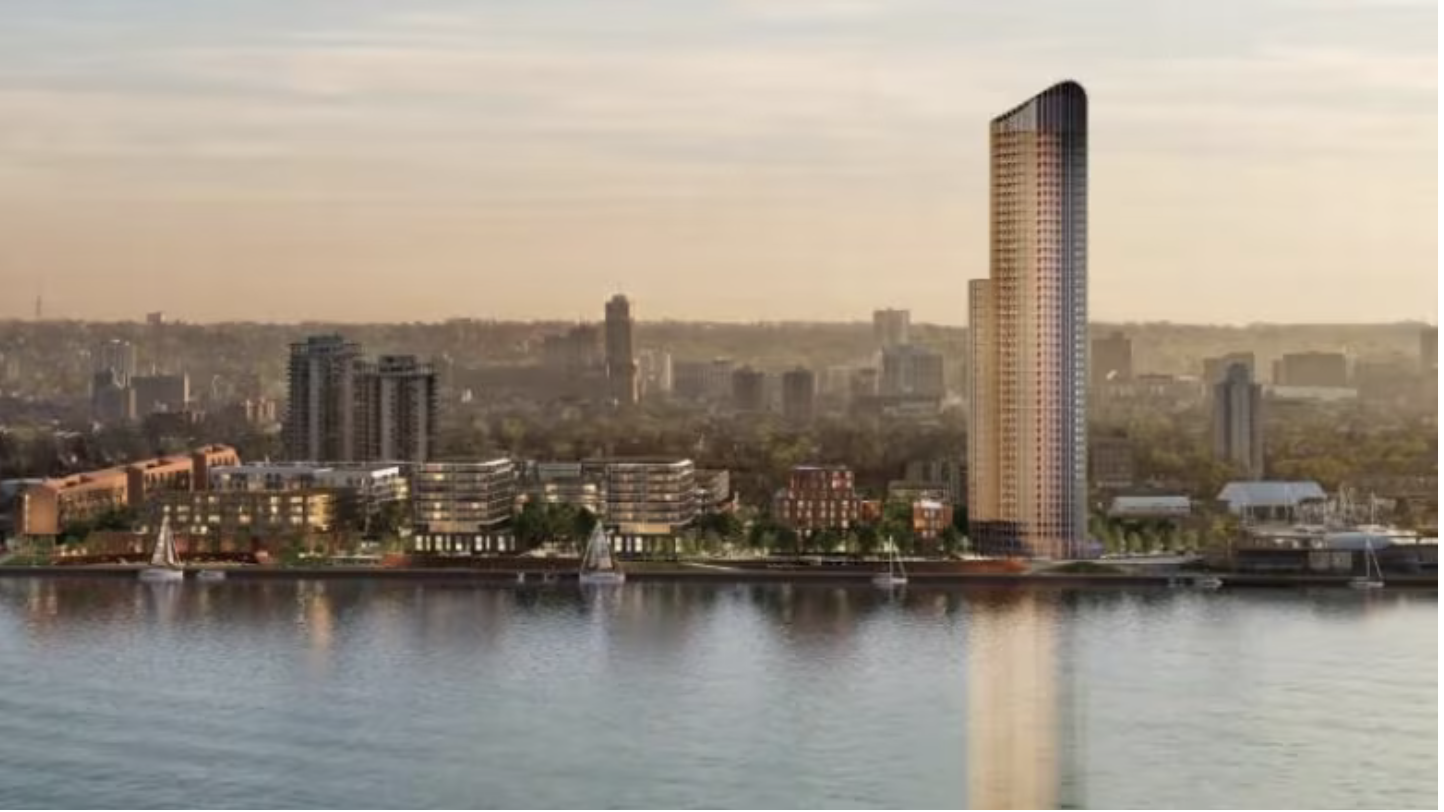
Hamilton’s Waterfront Development Expected to Generate Millions in Tax Revenue — Eventually
Once completed, the project will have generated $1B in private investment

Nexus Industrial: $316M in Acquisitions Lined Up so Far in 2023
Nexus Industrial REIT had a busy and successful 2022 and isn’t slowing down in 2023. One major acquisition is complete and other purchases and developments are in the works, as it continues to increase the industrial weighting of its portfolio.
“It was a tough year in the capital markets on the equity raise, so that kept growth smaller,” Nexus chief executive officer and trustee Kelly Hanczyk told RENX. “But coming into this year we’ve put a real emphasis on high-grading this portfolio to make it institutional quality.
“So I think at the end of the day, when you look at it as a whole, our portfolio is looking extremely attractive and has pretty good growth potential from both in-place and below market rents, and the amount of land that we’re able to develop on.
“When you’re developing and not purchasing land, your returns are much higher. So it looks like 2023 will be a good, solid year for us.”
Oakville-headquartered Nexus (NXR-UN-T) was formed in 2013. It owns 113 properties comprising approximately 11.6 million square feet of gross leasable area.
Recent and upcoming acquisitions
After making $316.8 million in industrial property acquisitions in 2022, Nexus closed on a 532,000-square-foot, new class-A distribution centre in Casselman, Ont. (just east of Ottawa) for $116.8 million from developer Rosefellow on March 7.
The property is leased long-term to Ford Motor Company of Canada and features 36-foot clear heights, 43 dock-level doors and two drive-in doors.
Nexus also has these four industrial properties under firm contract that have an aggregate purchase price of $199.5 million at a weighted average capitalization rate of five per cent:
- A new, approximately 140,000-square-foot single-tenant distribution property under construction in Burlington, Ont. features 32-foot clear heights, 28 loading doors and two dock doors. Its lease has a seven-year term, starting upon completion. The acquisition is to close July 4.
- A new, approximately 190,000-square-foot single-tenant distribution property under construction in the Greater Montreal Area features 32-foot clear heights, 28 truck-level doors and one drive-in door. Its lease has a seven-year term, starting upon completion. The purchase is set to close June 1.
- A new, approximately 83,000-square-foot single-tenant distribution property in the Calgary area is expected to close in the first half of 2024.
- An approximately 325,000-square-foot industrial property in London, Ont., including an under-construction 175,000-square-foot addition, is expected to close in August.
Nexus also has an approximately 305,000-square-foot single-tenant distribution property in London under diligence.
The property includes an under-construction 160,000-square-foot expansion and features 32-foot clear heights, 45 truck-level doors and eight drive-in doors. Its lease has a 10-year term, starting upon completion.
That purchase is expected to close on May 1. It will, subject to Toronto Stock Exchange approval, be funded by the issuance of approximately $24 million of Class B LP units at $10.30 per unit and the assumption of existing mortgage financing.
Nexus’ unit price closed at $9.66 on April 12. That’s near the lower end of its respective 52-week high and low prices of $14.03 and $8.15. The REIT had a market cap of approximately $664 million.
Development activity
This will also be a busy year on the development front.
Nexus acquired 80 per cent interests in two development sites in Hamilton for $22.6 million in 2022. It anticipates being able to develop approximately 358,000 square feet of class-A industrial space, with construction completion anticipated for early and late 2024.
The REIT will break ground in April on a 312,000-square-foot industrial building on 23 acres of land it owns in Regina. It has secured a tenant that will take a minimum of 205,000 square feet.
Nexus will also break ground in April on a 100,000-square-foot addition to a property in London, with plans to lease it to an existing tenant.
“We have a ton of land attached to the properties that we have and London has less than one per cent vacancy and not really anything coming out of the ground, so from a rental standpoint the fundamentals are really strong,” Hanczyk said.
Nexus is the most active developer in London, according to Hanczyk, who expects the REIT’s performance in the Southwestern Ontario city to remain strong.
The trust is also looking to expand industrial buildings with existing tenants in St. Thomas and Windsor this year and has identified about 550,000 square feet of potential additional expansion for existing buildings for 2024.
Retail dispositions
Nexus sold off two small properties for $12.8 million in Q4 2022. One was a retail/office building in Longueuil, Que. and the other a bank branch in Prince Edward Island that was the first property purchased by the REIT.
“It goes along with our continuing drive to be 100 per cent industrial in a couple of years,” Hanczyk said. “We’re repurposing and recycling capital out of retail to put into industrial.”
Nexus has a firm offer to sell an unenclosed shopping centre in Victoriaville, Que.
The deal for its largest wholly owned stand-alone retail property is expected to close this month.
The sale of the unenclosed mall — which includes Metro, Canadian Tire and Dollarama stores — will increase the trust’s industrial weighting to more than 90 per cent of net operating income (NOI).
Eighty-eight per cent of NOI came from industrial properties in Q4 2022, up from 81 per cent a year earlier.
Nexus received an unsolicited offer to purchase a small portfolio of industrial properties in Saskatchewan last year. It made it to the due diligence stage before talks ended.
“We’re finding a lot of the smaller buyers are having trouble getting the proper debt leverage that they need to close, so we pulled it from them,” Hanczyk said.
The Saskatchewan properties have “nice rental rate increases over the next several years,” according to Hanczyk, so it was decided to keep them for now.
Increased net operating income
Nexus’ NOI rose 71.2 per cent to $95.8 million in 2022, while fourth-quarter same-property NOI rose 2.2 per cent to $17.7 million from a year earlier.
The trust had an occupancy rate of 97 per cent to close 2022, up from 96 per cent a year earlier.
Nexus had a debt-to-total-assets ratio of 43.7 per cent on Dec. 31. Its lines of credit had $97.5 million of availability and it had $84.7 million of unencumbered properties.
“We’ll close what we have under contract with the cash that we have on hand and using our units as currency for this year, and I think we’ll start to focus on the outsized returns from the development side that will really boost things in 2024,” Hanczyk said.
Source Real Estate News EXchange. Click here to read a full story

Canadian Retail Performance Over the Last Two Years Has Been Surprisingly Resilient
The pandemic year of 2020 was obviously tough but also transformative, forcing many retailers across the country to transform into omni-channel sellers to survive amid intermittent lockdowns and uncertainty.
Then, in 2021, Canadian retail sales broke a new record, hitting nearly $700 billion in total sales, according to Statistics Canada figures cited in the Tenant Survey Report 2023 by Colliers Real Estate Management Services (REMS). Retail sales in 2022 also broke a record, reaching almost $735 billion.
When asked to rank their 2022 profitability on a scale from 1 to 5 (one being extremely unprofitable and five being extremely profitable), retailers reported an average of 3.1 (and 3.6 so far in 2023). With consumer confidence declining today amid rising interest rates, expanding household debt and increasing recession worries, the resilience — and profitability — of Canadian retail is about to get tested again.
What does 2023 have in store?
Colliers is expecting a more normalized sales increase in 2023, despite the aforementioned economic challenges. These challenges are in addition to the recent tremors in global finance caused by the first serious U.S. banking failures we’ve seen since the 2008 financial crisis.
If Canadian retailers are going to remain resilient (and more importantly, profitable), it’s not going to happen by accident; rather, it will take concerted effort, strategy and innovation.
Mostly, success will be born out of a renewed sense of harmony that can be distilled into five lessons that emerged from Colliers REMS’ 2023 survey of various retailers across the country.
The five lessons from profitable Canadian retailers
Have physical stores
Eighty-seven per cent of the retailers we surveyed indicated that in-store shopping remains the most profitable type of shopping. Brick-and-mortar sales hit $693 billion in 2022, representing a nine percent increase over 2021.
It’s a no-brainer benefit to online retailers to have a brick-and-mortar presence.
And it’s a benefit for brick-and-mortar retailers to have an online presence. The two formats work symbiotically, and it’s all about market share — and capturing the most market share together.
Don’t forget about your e-commerce platform
This became an obvious necessity during the pandemic when, for certain periods of time, people couldn’t go into many stores around the country.
Fast forward to 2022, retailers with an e-commerce platform were almost twice as likely to be profitable, Colliers’ survey found. Indeed, in 2020, online sales ballooned to nearly 12 per cent.
But since then, those online sales have normalized to pre-pandemic growth levels and now sit at roughly six per cent. That number is expected to climb to eight per cent by 2025.
Following the initial spike in adoption, the percentage of retailers with an e-commerce platform has stabilized at just over 50 per cent. That number should be higher for retailer profitability and success.
Connect the physical store with the e-commerce platform
Retailers that connected their physical store with their e-commerce platform were 35 per cent more likely to be profitable in 2022.
Finding ways to synergize the in-person and online shopping experience is an important way to boost sales and profitability. This could involve using the same supply chain internal processes, training employees to improve sales techniques, and performing additional market research to better understand customers.
Buy online and pick up in-store
Retailers report some customers spend up to 35 per cent more than their original online purchase when they pick up their purchases in the store.
The reasons are kind of obvious. If you show up at the store to pick up say, a coat or blazer you ordered, your visit with a salesperson provides the opportunity for them to mention the matching pants, blouse or shirt for that blazer.
Moreover, you might just happen to browse around, finding other items you’d like to buy.
The retailer has not only captured the online market, but also expanded that market share to the physical space.
Share the cost of returns with customers
This has been one of the sticky, hairy issues with the rise of e-commerce in Canada.
What happens when the item you buy online doesn’t fit, or doesn’t match your expectations? Most people send it back or return it to the store. This is a profitability killer for retailers.
This situation requires some re-education of the online consumer. We know that retailers who shared the cost of returns with customers were 40 per cent more likely to be profitable in 2022.
Unlimited free returns of items that can’t be re-entered into the supply chain is a worst-case scenario and a persistent problem.
Retailers must have clearer, well-communicated return policies. There must be a cost associated with a return, and items must be returned in a condition and package ready to be sold again and not to enter the secondary marketplace. This alternative is costly and wasteful.
The key to achieving this is clarity and convenience around the return.
Helping retail landlords and their tenants achieve this harmony
If we think about these lessons as a continuum of behaviour, what emerges is a sense of harmony that results in efficiency and profitability. But this labour and the strategic thinking requirement must be shared by the retailers and their landlords.
Retail tenants must fulfill their side of the arrangement by having strong sales teams; attractive, well-stocked stores; and an omni-channel sales strategy. The hybrid model must motivate customers to shop in-store and online in a way that doesn’t create a tidal wave of costly returns and un-sellable items.
For many retailers, it can all start with simply setting up a functional website.
Landlords also have a part to play in nurturing this harmony. It’s their job to help bring people to the shopping centre, high street or property. That means having a sound marketing strategy, a sensible location with convenient access, transportation networks and parking, and a thoughtful tenant mix that creates excitement, convenience and a reason for people to make the trip to the property.
While 2023 represents a new period of uncertainty for consumers, retailers and landlords, there’s a shared responsibility in the pursuit of harmony that will drive an important pair of byproducts: more sales and a higher level of profitability.
Source Real Estate News EXchange. Click here to read a full story

More Growth on Way in Ontario’s Surging Self-Storage Sector
Ontario’s 37.3-million-square-foot self-storage sector has grown by more than 4.2 million square feet during the past three years and more space is coming.
“Some of that is helping to support what we’re seeing in terms of small dwellings that are being built,” said Greg Martino, vice-president and chief valuation and standards officer for the Municipal Property Assessment Corporation (MPAC), an independent, not-for-profit corporation funded by Ontario’s municipalities.
MPAC is accountable to the province, municipalities and property taxpayers through its 13-member board of directors.
“Other factors that are contributing (to the growth in self-storage) are: more people working from home looking to store items that have accumulated in their spaces; they’re downsizing; or they’re doing some renovations to the homes that they currently live in and they require some place to store their personal belongings,” Martino told RENX.
The role of MPAC, which recently released data on self-storage space in Ontario, is to assess and classify all properties in compliance with the Assessment Act and regulations set by the Government of Ontario. It’s the largest assessment jurisdiction in North America, responsible for more than 5.5 million properties with an estimated total value of more than $3 trillion.
Condominium and self-storage growth are connected
Data released by MPAC in 2022 showed Ontario condominiums are 35 per cent smaller on average than they were 25 years ago.
The growth in self-storage has been especially pronounced in Toronto, Ottawa and Mississauga, Ontario’s most densely populated cities with the largest concentrations of condos.
Here are the 10 Ontario municipalities with the most self-storage square footage, according to MPAC:
- Toronto – 8,337,098 square feet;
- Ottawa – 3,065,090 square feet;
- Mississauga – 2,098,770 square feet;
- Hamilton – 1,049,608 square feet;
- London – 989,410 square feet;
- Brampton – 898,925 square feet;
- Oshawa – 845,045 square feet;
- Burlington – 791,740 square feet;
- Markham – 619,943 square feet; and
- Windsor – 580,320 square feet
While self-storage growth in Ontario might not increase at the same high rate as it has over the past three years, Martino expects it to keep increasing along with the high-density residential construction sector.
A Self-storage operator’s perspective
Bluebird Storage Management operates 30 self-storage facilities in six provinces, has about a dozen under construction and has almost 10 more under contract to acquire, according to chief executive officer Jason Koonin, who told RENX in a separate interview that he sees no signs of the sector slowing down.
The Greater Toronto Area (GTA) is the most mature self-storage market in Canada. Bluebird has been active in the GTA and will continue to be, but it’s also expanding outwards from there — including in other provinces.
Self-storage need is far in excess of supply, according to Koonin. He believes even more self-storage space would be under construction in Ontario but for the length it takes for projects to be approved. Other factors which are holding the industry back include high land costs, taxes and development charges, he noted.
Self-storage facilities becoming more modern
While traditional suburban, low-rise, mini-warehouse structures are still common, more sophisticated facilities are increasingly being built in urban locations.
These are typically larger, fully enclosed, multi-storey, climate-controlled structures that offer flexible spaces, 24-hour access, drive-in bays and enhanced security.
Koonin said these modern self-storage facilities are becoming relatively familiar sights in the GTA, but are still uncommon in many other parts of Canada.
He thinks just a few percentage points of the self-storage facilities across the country could be considered class-A.
“Take Quebec, for example,” said Koonin. “Much of the storage there is in old industrial buildings.
“There’s a lot of redevelopment work, but not really purpose-built stuff from the ground up. So we see tremendous opportunity in places across Quebec, across Alberta and Nova Scotia to build class-A facilities, which there are very few of.
“Part of our strategy is to grow through acquisition, but there’s not much class-A product to buy meaning heated, air-conditioned, multi-storey.”
Potential for building conversions
Some office and retail properties that have struggled with high vacancy rates could be considered for redevelopment by their owners and transformed into self-storage facilities, though Koonin said that may not be as easy as some might think given the design and structural integrity of some buildings.
Bluebird is in the process of converting a vacant four-storey office building in the United States into a self-storage facility.
“We may see self-storage as a potential alternative use for some of these sites where the buildings and locations are conducive to that sort of use,” said Martino, “but we’re also starting to see a few development proposals where a self-storage aspect is being built into mixed-use developments.”
Increasing investor interest in self-storage
Self-storage is also attracting more attention from institutional investors that might have previously put their money into office or retail properties but are now seeking alternatives that can deliver higher returns.
“The amount of capital trying to be redeployed is quite large, so we’re getting a lot of calls from people who are experienced commercial real estate investors who haven’t been in storage and they’re sort of shifting from other commercial asset classes,” said Koonin.
“I think it bodes well for storage.”
Koonin said the market in the United States is much bigger and more mature than in Canada and, due to a slowing economy and the large amount of self-storage space available, rent per square foot collected by operators there has fallen.
Conversely, Bluebird’s rent per square foot collected in Canada in February was eight per cent higher than a year earlier.
Source Real Estate News EXchange. Click here to read a full story

W.P. Carey Pays $468M US to Acquire Apotex GTA Properties
U.S.-based REIT W.P. Carey (WPC-N) announced this morning it will invest $468 million US to acquire a “critical portfolio of four pharmaceutical R&D and manufacturing campuses” in the Greater Toronto Area operated by Canadian global generic drug giant Apotex Pharmaceutical Holdings Inc.
The portfolio represents the majority of Apotex’s global operations, comprising 11 properties which cover about 2.3 million square feet of space. It is being acquired as a sale-leaseback.
The lease is structured as a triple-net master lease with rent payable in U.S. dollars and fixed rent escalations over a 20-year term. The sale-leaseback transaction closed April 3, concurrently with private equity firm SK Capital’s majority buyout of Apotex, financing a portion of the buyout.
Financial terms of SK Capital’s buyout of Apotex have not been released.
“We’re thrilled to close this sale-leaseback and welcome Apotex as a top tenant. In addition to its existing scale, we believe Apotex will continue to benefit from the deep expertise of its private equity sponsor in the pharmaceutical manufacturing sector,” Tyler Swann, managing director of W. P. Carey, said in the announcement. “This investment is a great example of our ability to partner with private equity firms to leverage sale-leaseback proceeds to optimize the capital stack for new acquisitions. We look forward to growing our partnership with Apotex and SK Capital alike.”
W.P. Carey a major net lease REIT
W. P. Carey is a major net lease REIT specializing in corporate sale-leasebacks, build-to-suits and the acquisition of single-tenant net lease properties. The firm has made significant investments in industrial assets so far in 2023, with this transaction bringing its total year-to-date investment volume to approximately $650 million – most of it in industrial assets.
W. P. Carey reports an enterprise value of approximately $24 billion, holding a diversified portfolio of commercial real estate which includes 1,449 net lease properties covering approximately 176 million square feet, and a portfolio of 84 self-storage operating properties, as of Dec. 31, 2022.
With offices in New York, London, Amsterdam and Dallas, the company’s focus remains investing primarily in single-tenant, industrial, warehouse and retail properties located in the U.S. and Northern and Western Europe, under long-term net leases with built-in rent escalations.
Apotex was founded in the mid-1970s by Barry Sherman, a billionaire who was found murdered in his Toronto home with wife Honey in 2017. The future of the company has since been uncertain, and embroiled in controversy.
Apotex has also been the subject of legal action including a price-fixing scandal in the United States.
At the time of Sherman’s death, the company was considered to be worth about $3 billion.
Source Real Estate News EXchange. Click here to read a full story

Office Market Sees First Quarterly Net Rent Decline In Years
While it was less than one per cent, the Canadian office market saw its first quarterly asking net rent decline in years in Q1 2023, according to Colliers’ new “National Market Snapshot” report.
The overall average asking net rent across the country is $20.37 per square foot. It’s $22.79 downtown and $17.37 in the suburbs.
Colliers senior national director of research Adam Jacobs told RENX the Canadian office market was hit by a double whammy of more people working from home due to the COVID-19 pandemic and a record amount of construction, but that cycle is coming to a close.
“I don’t see this situation in the future where we have rising vacancy and we’re still adding millions and millions of square feet of office space to downtown,” said Jacobs. “I think we’re going to get back to a situation where there’s a lot less construction going forward and we’re just going to deal with the stock that we have.”
The national office vacancy rate is 13.3 per cent, including 14.7 per cent downtown and 12 per cent in the suburbs.
A recent survey of Colliers-managed buildings showed that small businesses are more committed to having employees in the office than large corporations. However, Jacobs thinks more major occupiers will follow RBC’s recent lead and become more demanding when it comes to having more employees in the office.
National industrial overview
While Canada’s industrial vacancy rate is one per cent, each of Colliers’ tracked markets with a vacancy rate below one per cent in Q4 2022 saw increased vacancy in Q1 2023. It’s still a landlord’s market, however, despite record high construction.
National average industrial asking net rents continue their steady climb, sitting at $13.81 per square foot, which represents a 32 per cent annual increase. Affordable prices relative to Toronto and Vancouver can be found in the Prairie markets, none of which are above $12 per square foot, but these areas are also experiencing rapid rent growth.
“We’re building more and more and more industrial and yet, no matter how much we build, it doesn’t slow the market down or flood the market or drive the vacancy up,” said Jacobs. “It feels like we’re building so much, but it’s really not that much relative to how much is probably needed.”
Jacobs pointed out that, despite these steep increases, industrial rents are still lower than in markets including California and New Jersey. Large corporations looking for distribution and warehouse space aren’t overly rent-sensitive either, he added.
While industrial rents will likely keep rising, the rate of increase is expected to taper off since Jacobs said the recent pace can’t keep going.
“The sales side has really slowed down and the leasing side hasn’t, and I’m not sure if those have to come in line or if it will just stay that way,” said Jacobs.
British Columbia
Vancouver and Victoria’s office markets have continued to do relatively well, with respective 6.5 and 6.4 per cent vacancy rates and average asking net rents of $34.67 and $24.01 per square foot. With their reliance on technology companies, Jacobs said those office markets could take a bit of a hit.
“Tech has really driven things and it’s been an incredibly positive driver, but we’re now hearing the news that there’s a pretty big pullback in tech and people are holding their breath a little bit.”
This quarter delivered the largest amount of new office supply in seven years in Vancouver. The Post’s south and north towers’ more than one million square feet were fully pre-leased to Amazon, and Bosa Waterfront added 355,000 square feet of space.
Vancouver’s suburban office vacancy rate is five per cent, compared to 8.4 per cent downtown, and Jacobs said there’s huge demand for space in Burnaby and Richmond. Downtown average net asking rent remains much higher, however, at $39.91 per square foot compared to $27.01 in the suburbs.
Vancouver’s industrial vacancy rate is 0.6 per cent despite more than 710,000 square feet of space being added to the market, and the average asking net rent rose to $22.09 per square foot. Some businesses have started decreasing their footprint to maintain similar operating costs.
Victoria’s Plexxis Tower was completed this quarter and is ready for occupancy. The five-storey building provides 67,074 square feet of office space and 10,298 square feet of retail space to the suburban market.
Victoria’s industrial vacancy rate rose slightly to 0.4 per cent while its average asking net rent increased to $18.13 per square foot. Industrial product remains highly sought after by both owner-users and investors, but supply limitations have been a barrier.
Alberta
Calgary’s 27.7 per cent office vacancy rate is the highest of the 12 markets included in Colliers’ report, well above Edmonton’s second-place 20.1 per cent. Calgary’s average asking net rent is $14.39 per square foot and Edmonton’s is $16.65.
“Usually downtown still commands higher rents, but I think Calgary is the exception where you’re actually paying higher rents in the suburbs,” said Jacobs.
Calgary is offering incentives and looking to convert certain office buildings into residential spaces, vertical farms or other uses. Half-a-million square feet of office inventory were removed from the market in this quarter.
After a record-breaking year for Calgary’s industrial market, there was some cooling in this quarter when it had a 1.8 per cent vacancy rate.
Leasing activity continues to be solid and dwindling available inventory is putting upward pressure on asking net rental rates, but it’s still comparatively much cheaper to occupy space in the city than in other major industrial markets across Canada.
Edmonton’s industrial vacancy rate dipped to 3.8 per cent, the first time it fell under four per cent in nearly eight years. The average asking net rent is $10.47 per square foot.
Construction volume remains high in Edmonton, with more than four million square feet being built and more than three million expected to be delivered within the next six months.
This large influx should help alleviate the perpetual demand for newer and larger distribution centres and warehousing space along major traffic routes.
Saskatchewan and Manitoba
Saskatoon has an office vacancy rate of 11.9 per cent and average asking net rent of $19.96 per square foot.
Saskatoon’s industrial sector is still short on smaller-bay warehousing spaces, but availability is opening in larger speculative builds in the BizHub Industrial Park. It has a two per cent vacancy rate and the average asking net rent continued to rise to $11.58 per square foot.
Regina’s office vacancy rate rose slightly to 17.9 per cent while the city’s average asking net rent rose to $15.86 per square foot.
Regina’s industrial market started 2023 off well, recording positive absorption, a decrease in its vacancy rate to 1.4 per cent and an increase in asking net rent to $11.42 per square foot.
While Winnipeg’s suburban office market had previously been outperforming downtown, with higher absorption and lower vacancy, it also saw an increase in vacancy to start this year. The suburbs has an 11.3 per cent vacancy rate, while it’s 14.9 per cent downtown.
A significant number of spaces came back to the market, which caused negative absorption, and the average asking net rent dropped to $16 per square foot.
Winnipeg’s industrial leasing activity remains strong. While the vacancy rate increased quarter-over-quarter to 1.5 per cent, this can be attributed to larger blocks of older inventory coming back to the market, including 156,715 square feet at 1555 Buffalo Place.
Ontario
Existing downtown Toronto office tenants continue to downsize their locations in proximity to the financial core, and the vacancy rate rose to 10.4 per cent — the same as in the suburbs. The average asking net rent is $34.98 per square foot in downtown and midtown and $17.80 in the suburbs.
“Toronto is the extreme case where downtown has just suffered so much because it’s so dependent on big business and riding the subway and riding the GO Train and all that,” said Jacobs.
Office spaces under 10,000 square feet are seeing more activity and landlords are building out model suites to attract tenants looking for simple solutions. Tenants looking for 20,000 square feet and above are being more calculated with their timing and decision making.
Despite rising vacancy rates in central Toronto, Jacobs said there’s been no movement to repurpose office buildings to other uses.
While Toronto industrial lease rates remain high across the board, with an average asking net rent of $18.01 per square foot, the market is beginning to see the flight to quality experienced in the office market during the course of the pandemic.
Facilities built within the last 10 years are achieving the highest rental rates, while less contemporary buildings are sitting on the market longer.
Ottawa’s office market continues to soften, with its vacancy rate rising to 12.3 per cent. Still, the average asking net rent increased to $17.24 per square foot. Sublet space continues to rise, with approximately 65 per cent of sub-lease availabilities in the suburbs.
Ottawa’s industrial vacancy rate is 1.1 per cent and the average asking net rent has risen to $16.14 per square foot as demand continues to increase.
Nine industrial projects totalling 622,912 square feet are under construction in Ottawa. Another 30 are in the planned or pre-leasing development stage. With perpetually low vacancy rates and the upcoming addition of modern facilities, rental rates are expected to continue to climb.
Waterloo Region’s office vacancy rate is 10.4 per cent and its average asking net rent fell to $16.63 per square foot.
Waterloo Region’s industrial office vacancy rate is 0.7 per cent and its average asking net rent dropped to $11.89 per square foot. Close to 20 million square feet of new space is either planned or under construction.
Montreal
Montreal’s office vacancy rate is 14.5 per cent and its average asking net rent is $18.68 per square foot. Subleases are rising and AAA- and A-class spaces are being absorbed at a higher rate and at the expense of B- and C-class spaces downtown.
Montreal’s industrial vacancy rate is 0.9 per cent and its average asking net rent rose to $16.71 per square foot. Jacobs said industrial rents were increasing by more than 50 per cent annually, but that can’t be maintained.
There’s still demand for high-quality industrial assets and Alberta Investment Management Corporation (AIMCo) and Montoni acquired a property at 3400 Raymond-Lasnier from TD Asset Management for $108 million during the quarter.
Halifax
Halifax’s office vacancy rate increased slightly to 14.1 per cent, which is mostly attributable to an influx of sub-lease space in the suburbs. The average asking net rent is $16.43 per square foot.
While the industrial vacancy rate rose to 2.4 per cent, that can be attributed to two newly built properties totalling more than 140,000 square feet.
Demand for space remains strong and more than 530,000 square feet of product is under construction. About 480,000 of that is expected to be completed by year-end.
The average asking net rent increased by four per cent quarter-over-quarter to $12.42 per square foot and is expected to continue to rise over the course of this year.
Source Real Estate News EXchange. Click here to read a full story








